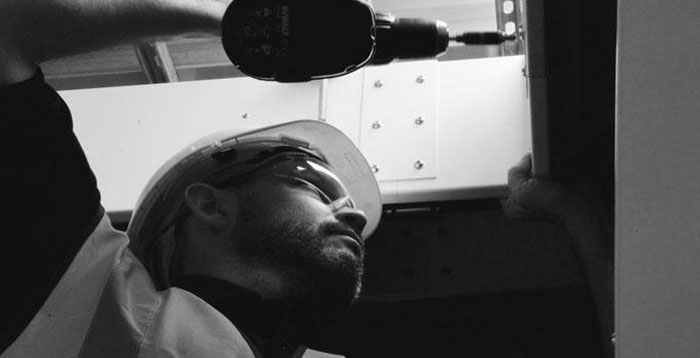Fire curtains and smoke curtains are made of fire resistant fabrics and work as barriers to protect people and buildings alike from the dangers that fire presents. Today, fire and smoke curtains are used in place of more traditional compartmentation or sprinkler systems in order to provide designers with a modern alternative to non-load bearing fire walls, fire doors, and fire-rated glazing.
Both types of protective curtain have recently seen a surge in popularity, due to their ability to help create modern, open plan environments which are wholly compliant with today’s strict fire legislation. It also enables open plan areas to be greater in size than permitted under the current building regulation recommendations. As smoke and fire curtains often replace other fire safety measures, both play a vital life safety role and must be maintained to high standards, to ensure that they will perform as expected in the event of a fire.
The Fire Safety Order: BS 8524-2
In the UK, the Fire Safety Order places the responsibility on the building occupier to ensure that all fire safety measures are maintained and all fire protective equipment is in an operational state at all times. Since infringements may lead to prosecution, occupiers should ensure that all fire safety equipment is maintained in accordance with the manufacturer’s instructions. For fire and smoke curtains, the occupier should follow the recommendations outlined in BS 8524-2: Active fire curtain barrier assemblies, code of practice for application, installation, and maintenance:
The BS 8524-2 requires that fire curtain servicing, planned inspections, testing and maintenance should be carried out by a ‘competent person who is able to check and confirm that barrier assemblies are operating and performing effectively, when required’ and that all such tests are accurately logged and recorded.
The BS 8524-2 also advises that tests are undertaken at the same time each week so that all staff are familiar with the system’s operation. It urges that all maintenance staff should be fully trained by the manufacturer. The building occupier should undertake a test, at least monthly, of self-closing devices and automatic release mechanisms via a test switch. They should also check that the sensory detection equipment and self-test facility is functioning correctly.
Correct Fire Curtain Installation
On the completion of any building work, be it a new build or a simple refurbishment, the building contractor is legally obliged under the Construction Design and Management (CDM) Regulations 2007 and Regulation 38 of the Building Regulations, to pass information regarding the fire safety measures installed within the building on to any occupants.
Critical systems, such as fire curtains and smoke curtains, should be accompanied by a completion certificate, which provides details of exactly what has been installed. This should be checked against the original design specifications.
Fire Curtain Servicing
There are a series of regular checks recommended by BS 8524. Some of these can be undertaken by the Responsible Person on site, others must be undertaken by a competent engineer as part of a planned maintenance programme.
The client should be competent to operate any fire curtains or smoke curtains and other self-closing devices at least monthly, and on escape routes weekly, where they should test the automatic release mechanisms. They should also check that all curtains are free of obstructions within their descent path and inspect curtains for signs of damage.
An inspection should be undertaken by a qualified engineer at least annually. Service engineers will check the security of fixings, mechanical parts and linkages to other systems such as the fire alarm and smoke control systems and undertake a range of electrical checks.
All regular fire checks and fire curtain servicing should be recorded and logged.


